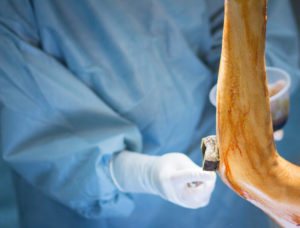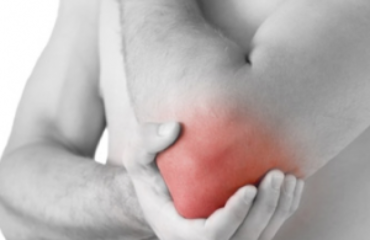 Tommy John surgery has been made famous by baseball pitchers, but the injury actually occurs in several other sports including softball, tennis, gymnastics, and javelin throw. The surgery repairs an injured ulnar collateral ligament (UCL). This ligament connects upper arm bone (humerus) to a forearm bone called the ulna. The UCL ligament attaches these bones on the inside of the elbow.
Tommy John surgery has been made famous by baseball pitchers, but the injury actually occurs in several other sports including softball, tennis, gymnastics, and javelin throw. The surgery repairs an injured ulnar collateral ligament (UCL). This ligament connects upper arm bone (humerus) to a forearm bone called the ulna. The UCL ligament attaches these bones on the inside of the elbow.
By the time most college or pro athletes reach that level of a competitive sport, they are more prone to the UCL injury, and it is more typical for the surgery to be performed on that age group. However, with the advent of year-round sports, the surgery is now being performed on younger and younger athletes. The surgery is still predominantly performed on baseball pitchers.
Baseball pitcher Tommy John played for the Los Angeles Dodgers in the 1970’s and made the surgery famous when he underwent it because it was the first procedure ever done of this type. The surgery is also referred to as UCL reconstruction surgery.
So how do these injuries develop?
Repetitive stress to the elbow is the usual cause, but the injury results from trauma in some cases. Any throwing motion that puts extreme stress on the UCL ligament will cause injury over time, so that is why throwers—baseball, softball, javelin, shotput—are at the highest risk.
Athletes will usually experience pain on the inside of the elbow, and the elbow will likely feel loose and unstable. Sometimes, the damaged ligament interferes with the ulnar nerve to give the “funny bone” feeling, or the athlete might have numbness and tingling in the fingers. And of course, the athlete’s ability to throw is greatly diminished.
The injury can usually be felt through palpitation and is normally clearly visible on an X-ray. A doctor might also use an MRI or an MRI with gadolinium dye injected into the elbow as a diagnostic tool.
What is involved in this surgery?
If the injury is not too severe, your orthopedic surgeon may first try the RICE regimen–rest, ice, compression, and elevation–and may also prescribe a physical therapy regimen to strengthen the elbow muscles.
However, some athletes must immediately have the surgery. Many do not respond to the above treatments, and some want to get the surgery over with to resume their sport because the rehab can take up to a year.
The damaged ligament is removed and replaced with a healthy tendon from another location in the patient’s body, such as the wrist, forearm, hip, hamstring, knee or big toe. Sometimes the Achilles tendon is used. In some cases, surgeons use a cadaver tendon.
The surgeon drills a single hole into each of the two bones (ulna and humerus), passes the tendon through the holes, and then creates a figure-eight weave pattern to reconstruct the ligament. If any of the original UCL ligament can be salvaged, the surgeon will attach remaining remnants to the replacement tendon for added strength.
After surgery, the athlete wears a splint to immobilize the elbow for about two weeks. The surgeon will usually require that range-of-motion physical therapy for the wrist, hand, and shoulder begin immediately to maintain strength and flexibility. Later, elbow range-of-motion exercises are phased in.
About six weeks after surgery, the athlete will begin exercises to strengthen the elbow, and those exercises continue for several months.
Surgical complications can occur in as many as 20% of cases, and most often involve damage to the ulnar nerve during surgery. Infection of the surgical site and hematoma can also occur, but a second corrective surgery is rarely required.



